
Are you looking for a solid and complete writing curriculum to use with your child? I was searching for a different writing curriculum. I wanted one that focused on writing styles or formats. I was creating lessons myself, but I wanted something already prepared and ready to go. Why reinvent the wheel when a perfectly good curriculum is available to home educators? Our previous writing curriculum covered a few basic parts of speech and was mainly copywork lessons containing a few words. Grammar appeared in small spurts and was mostly information my daughter already knew. She was definitely ready to begin compositions and learn about more advanced grammar concepts. We both enjoy writing so I made it my mission to find an effective curriculum. I wanted her to have the writing tools which would equip her to be a better writer. This is where Essentials in Writing comes into play.
I was recently introduced to a DVD-based writing curriculum. A curriculum that was very different from those that I have seen and used in the past. We have used several DVD-based curriculum before but we have never tried using a DVD-based writing curriculum until now. We received the First Grade Curriculum from Essentials in Writing to review as part of the Schoolhouse Review Crew. I considered the second grade curriculum, but at the time it was not available for us to review. The curricula was developed by the author, Matthew Stephens, who is also the instructor in the video lessons. He was a former public middle school English teacher who has obtained remarkably high credentials in his life and is currently homeschooling his children. This curriculum is suitable for children ages 6-7. However, you can easily use this curriculum with a younger child that has some background knowledge and experience with writing and grammar. The curriculum states that it is important to start children at the first grade level only after the have a strong phonetic-based spelling background. Spelling and phonics has always been one of Alyssa's strengths. I felt she was definitely ready to take on a new challenge - one that Essentials in Writing offered. Please make sure that your child also has strong fine motor skills before beginning a formal writing curriculum.
Product Description
Essentials in Writing states that their curricula is a complete, comprehensive language arts curriculum emphasizing composition for 1st through 12th grade. The curricula products are organized by specific grade levels. The first grade curriculum focuses on grammar and composition.
I was recently introduced to a DVD-based writing curriculum. A curriculum that was very different from those that I have seen and used in the past. We have used several DVD-based curriculum before but we have never tried using a DVD-based writing curriculum until now. We received the First Grade Curriculum from Essentials in Writing to review as part of the Schoolhouse Review Crew. I considered the second grade curriculum, but at the time it was not available for us to review. The curricula was developed by the author, Matthew Stephens, who is also the instructor in the video lessons. He was a former public middle school English teacher who has obtained remarkably high credentials in his life and is currently homeschooling his children. This curriculum is suitable for children ages 6-7. However, you can easily use this curriculum with a younger child that has some background knowledge and experience with writing and grammar. The curriculum states that it is important to start children at the first grade level only after the have a strong phonetic-based spelling background. Spelling and phonics has always been one of Alyssa's strengths. I felt she was definitely ready to take on a new challenge - one that Essentials in Writing offered. Please make sure that your child also has strong fine motor skills before beginning a formal writing curriculum.
Product Description
Essentials in Writing states that their curricula is a complete, comprehensive language arts curriculum emphasizing composition for 1st through 12th grade. The curricula products are organized by specific grade levels. The first grade curriculum focuses on grammar and composition.
First Grade Topics Covered
You can see the scope and sequence for the first grade curriculum in detail if you click on the link provided. You will be able to see the logical sequence of the lessons which are presented in video lecture format. I have included a list below for quick reference.
- The Definition of Writing
- Letter Formations
- Letter Sounds
- Complete Sentences and Sentence Formation
- Spacing Words
- Capitalization (Beginning of Sentence, Names, )
- Punctuation Marks (Three Types of End Marks)
- Types of Sentences
- Sentence Subjects and Predicates
- Sentence Fragment Identification
- Five Parts of a Friendly Letter (Writing Personal Letters)
- Common Nouns
- Proper Nouns
- Action Verbs
- Paragraph Introduction
- Three Parts of a Paragraph
- Indentation
- Staying on Topic
- Checklists (Variety)
- Descriptive Paragraphs
- Narrative Paragraphs
- Comparing Types of Paragraphs
- List-Making (Types and Features)
- Text Features of Poetry (Comparison to Paragraphs and Rhyme)
What You'll Receive
DVD Video Lessons
DVD Video Lessons
You will receive a DVD with 37 short step-by-step video lessons that last approximately 3-7 minutes long. The number of class sessions really depends on your pace and lesson approach. The curriculum indicates that there are 60-70 class sessions for the entire school year. It is possible to complete two curricula levels in one year. Be sure to read the parent letter that you will receive which explains how to use their curricula. The concepts were presented in incremental bite-sized "chunks" in which one concept was thoroughly taught at a time. The instructor, Matthew Stephens, actually teaches the concepts and then models or shows the child how to apply it in their writing. View the sample video below to see how Mr. Stephens teaches Lesson 21 which discusses personal letters - this will give you an idea of how the video lessons are presented.
PDF Worksheet File
An e-mail that includes a file link to the PDF worksheet assignments will be sent once you have purchased the curriculum. Please read this update with regards to the worksheets. The PDF file contains 76 worksheet assignments with a four-page answer key. The answer key provided work samples and explained the fact that some answers may vary. Most worksheets are black-and-white but several use a minimal amount of color. It is very important that you save the files where you can easily find them because you will refer to the worksheets often. You can print out the entire year's worth of worksheets or you can print them as you go. In the beginning, I chose to print out a week's worth at a time. However, I quickly realized that we would be working at a much faster pace. So, I decided to print out two weeks at a time. If I had known that we were going to finish the entire program during the review period, then I would have printed all the worksheets out in advance and placed them in her three-ring writing binder. You also have the option of purchasing a pre-printed workbook. One thing that I liked about the worksheets was that they summarized the concept taught in the DVD lessons concisely at the top of each page. As long as the children read the information the concept was reiterated. The directions for each group of problems were also noted in bold type print.
How We Used It
I used the Essentials in Writing First Grade Curriculum with my five-year-old daughter. She is already capable of writing complete sentences and has been exposed to grammar at an early age. I consistently used this curriculum on a daily basis (Monday through Friday). It took us 15-45 minutes to complete the recommended lessons for the day. Obviously, it would depend on whether your child was working on a grammar worksheet or a composition. In my past teaching experience, children always take longer to formulate their own sentences when writing about a particular topic. Many people recommend spending 15-20 minutes on writing lessons with younger children. She worked for an average of 30 minutes. Please understand that children may need more time to finish their compositions so a project may take several days to complete. Every lesson will depend on your child's writing abilities. My daughter would often complete more than one worksheet per day. Lessons became longer when she began writing her own paragraphs. In the beginning we alternated grammar and composition lessons so that we could get a definite feel for what the entire curriculum had to offer. We started with Lesson 5 which reviewed spacing between words and sentences. Then, we jumped ahead to the friendly letter lessons beginning on Lesson 14. However, eventually the lessons for the two components (grammar and composition) met in the middle; that's when we continued working with composition lessons until we hit Lessons 22-25 where additional grammar concepts were taught. We had the opportunity to experience all parts of the curriculum by learning grammar simultaneously with composition. Alyssa was able to make connections and apply the knowledge gained during grammar lessons in her composition assignments and every day writing.
I modeled the "think aloud" method for my daughter before beginning her first lesson. I didn't really have to remind her to "think aloud" because she did it naturally. She had background knowledge with how to "think aloud" because we utilized the method frequently in her morning message and family journal. The company suggests that the student "think aloud" as they work through the worksheets and lessons. This proved to be a helpful method for keeping my daughter on track. It was also a great way to assess her knowledge and correct any misunderstandings. I believe the "think aloud" method must be modeled and practiced to solidify learning. Mr. Stephens did a good job of preparing students with this method or thought process. Be sure to read over the expectations of how to use Essentials in Writing. We started out using this method but felt the pace was too slow for my daughter. We decided to combine lesson assignments as long as Alyssa could explain or narrate what she learned from the previous lessons clearly.
The company clearly explains how you should use Essentials in Writing. Here is the run down for a daily lesson.
1.) Look at the worksheet assignment ahead of time to view and prepare for lesson concept(s).
I modeled the "think aloud" method for my daughter before beginning her first lesson. I didn't really have to remind her to "think aloud" because she did it naturally. She had background knowledge with how to "think aloud" because we utilized the method frequently in her morning message and family journal. The company suggests that the student "think aloud" as they work through the worksheets and lessons. This proved to be a helpful method for keeping my daughter on track. It was also a great way to assess her knowledge and correct any misunderstandings. I believe the "think aloud" method must be modeled and practiced to solidify learning. Mr. Stephens did a good job of preparing students with this method or thought process. Be sure to read over the expectations of how to use Essentials in Writing. We started out using this method but felt the pace was too slow for my daughter. We decided to combine lesson assignments as long as Alyssa could explain or narrate what she learned from the previous lessons clearly.
The company clearly explains how you should use Essentials in Writing. Here is the run down for a daily lesson.
1.) Look at the worksheet assignment ahead of time to view and prepare for lesson concept(s).
 |
| Parts of the Friendly Letter: Each Part Taught Separately |
4.) The child explains what they have learned from the lesson by using the "think aloud" method when working through their assignment or following the completion of the assignment.
Another Lesson in Action
One Composition Lesson
I wanted to share with you the narrative writing assignment that Alyssa completed over several days. First, she watched a video lesson on narrative paragraphs (Lesson 34). Next, she completed the boxed graphic organizer as seen below. Then, she wrote out her final draft on the lined paper provided. She checked (self-evaluated) her work using the student checklist which can also be used by the parent as a rubric if necessary.
What Does it Cost?
What I Like
 |
| Watching Lesson 5 (Spacing) on portable DVD player |
 |
| Completing Worksheet 5A |
 |
| Trying to get a better shot and different angle for you to see. |
I wanted to share with you the narrative writing assignment that Alyssa completed over several days. First, she watched a video lesson on narrative paragraphs (Lesson 34). Next, she completed the boxed graphic organizer as seen below. Then, she wrote out her final draft on the lined paper provided. She checked (self-evaluated) her work using the student checklist which can also be used by the parent as a rubric if necessary.
 |
| Boxed Graphic Organizer |
 |
| Final Draft: I forgot to take a photograph of her drawing. |
 |
| Checklist: She marked that she needed help putting events in order. She said she couldn't remember the order each event happened. I thought she did a great job! |
The First Grade Essentials in Writing Curriculum will cost you $40 which is reasonable when compared to other several other writing curriculums on the market. I have seen several writing curriculums that are more expensive and a few that are less expensive. These curriculums do not always include both grammar and composition lessons. Some may be very complex making it difficult to figure out. This simple curriculum falls somewhere in the middle range and is affordable depending on your homeschool budget. If you would like to purchase the optional printed workbook, then it is available for an additional $20. Remember that you receive a link to the PDF files as part of the curriculum.
- I love the sequential order of the company's first grade writing approach. The instructor teaches children that letters are symbols that make sounds. The child learns how to write or form letters which gently progresses into a lesson on how those letters can form words. The child's next step is to learn that words can be used to construct sentences or complete thoughts. They'll learn that these sentences can be written as an organized and structured paragraph that stays on topic. I think that it is equally important that children start writing personal letters and then move into lessons about descriptive and narrative paragraphs. More in-depth paragraphs such as expository, business, and persuasive are taught at higher grade levels. This is the same approach I would prefer using when teaching writing to first graders in the classroom and to my daughter.
- As much as I love teaching writing, this program is taught by Matthew Stephens. Alyssa seemed interested in the concepts that he presented. I noticed that she was trying to interact with him when he asked questions. She would raise her hand, answer his questions aloud, and point to items on the screen. This shows that she was truly attentive and learning the material during the lessons. I can see this curriculum benefiting visual, auditory, and kinesthetic learners. My job was to provide guided support if necessary during the assignments. I was able to quickly assess what concepts Alyssa had mastered and which ones she could further review or practice a bit more.
- All the content within lessons are definitely age appropriate. The lessons are prepared for the home educator and the teaching is done for you. There is seriously absolutely no prep for the parent unless you count printing assignments as prep work.
- The format or structure of the program is extremely easy to follow with a manageable approach to lessons. The DVD lesson number and title are stated visibility on the screen. The menu is easy to navigate as well. You have the option of playing the lessons from the very beginning or going to the "Lesson Index."
- Customer service was outstanding! I contacted the company (Matthew Stephens) with regards to a scratched DVD. They immediately contacted me via e-mail and addressed my concern promptly.
- I know that we could easily complete two grade levels in one year since we homeschool year round. This of course depends on my daughter's comprehension of the concepts. We can thoroughly cover the concepts yet continue to work at her individualized pace. If you use this curricula, then you can chose the pace that works best for your children. There is a lot of flexibility in this curriculum. I was thrilled to find out that Alyssa (no matter how old she is) could complete lessons based on her abilities, strengths, and weaknesses with this curriculum. It met her needs. It can be difficult at times finding curricula that will take her learning up a notch yet still be age appropriate while moving at her pace.
- Grammar lessons are taught in isolation at first yet they are also reviewed during composition lessons. They are eventually interwoven into the curriculum. The instructor reminds the student that the first word in every sentence is capitalized and that proper nouns must also be capitalized. He also threw in a lesson on ellipses and their purpose in writing.
- He wrote the topic and closing sentences in different colors (green and blue) so that the child can see clearly where the topic sentence began and where the closing sentence ended the paragraph.
- There were student checklists that served as self-evaluations. Alyssa would complete the checklist and I would conference with her to discuss her progress. We also talked about her goals for the future and things to watch out for when writing.
- You have the option of repeating lessons easily or you could recreate more lessons by changing the topics especially with regards to the writing assignment. As we progressed through the course, I was able to assess which concepts she might need to practice. I did a quick google search and supplemented with online free resources for additional practice. I also created a few hands-on activities that reiterated the lesson concepts. This was so much easier than having to create an entire writing curriculum for the year.
- The curriculum doesn't focus on just one writing format; several different writing styles are taught in the short lecture presentations. The worksheet assignments are numbered; they are not indicated by days which helps the home educator that doesn't always follow the Monday-Friday daily lesson plan schedule.
- This curriculum can be used with multiple children. You can reprint worksheets on the DVD from your computer whenever you want. This works well if you have younger children than the grade level being used or several children working at the same grade level. Multiple copies can also be made if a child must repeat a lesson. However, they may get bored doing the same worksheet over and over again.
- Mr. Stephens teaches the lesson at a whiteboard as if speaking to a group of children. However, I don't remember ever hearing much from the children (if anything) in the videos. This was a positive for us because it enabled the child to focus on the lesson and eliminated any interferences or distractions that might occur if the class was seen on site. This was not the case during Essentials in Writing.
- You can adapt the lessons. Alyssa was given a list of sentence out of order as part of her assignment one day. I thought it would be easier for her to rearrange the sentences if I cut them into strips. She moved the sentences around reading each paragraph until she was happy with the final results. You can then have the child glue the pieces in order. I asked Alyssa to write the entire paragraph in sequential order on lined paper them using correct capitalization, spacing, and indentations.
- I skipped all of the letter formation videos. My daughter has been writing her letters for a long time and she has had ample opportunities to practice writing them on numerous occasions. The company encourages you to skip these lessons if your child is familiar with the concepts. I did notice that a few of the letters were taught using a technique that differed from ours. For example, the capital letter "A" was written starting at the bottom of the line. We always start the capital "A" at the top. My daughter kept trying to "correct" his formation. I made the immediate decision to skip those lessons. I would have used the video lessons with her as review had our methods meshed 100%. There are a variety of ways to teach handwriting. However, I did not want to confuse my daughter nor did I want her to question her letter formations after all our hard work. I did watch the rest of the lessons. The letter "A" was the only letter that seemed a little off to me. This was the first time I had seen the capital letter "A" written in this manner. The instructor progressed through the alphabet forming letters on the board and used "air writing" to practice formations. He even told children that the "W" and "M" could be written differently and that it okay to write them either way. I taught Alyssa how to write the "W" all the way to the top and that the "M" touches the bottom line. I liked that he explained the difference and verified that it was also a correct way to write the letter. As he taught the lessons, he told children where to start their letters and which ones hang below the line.
- Before I decided to skip the letter sound lessons, we started watching the video lesson together. She immediately noticed that certain vowel letter sounds were not mentioned. This is when I turned off the lesson to view it later. He mentions that letters a, o, u, i, y, and s have only one or two sounds. My daughter has learned that several letters have multiple sounds. She is very aware of the letter sounds and has thoroughly studied them during her spelling lessons. Mr. Stephens only covers the long and short vowel sounds and mentions the long sounds first. This is a common teaching practice and is not incorrect by any means. However, it is possible that a child that has been taught multiple letter sounds for certain letters will think that the teacher is incorrect or forgot them. I did not want my daughter to not take him seriously so I used my better judgment and skipped the letter sound lessons. There were a few other letters that were pronounced a little differently (with slight variations) from how Alyssa was taught.
- I would not consider this a complete language arts curriculum, because reading, phonics, and spelling fall under that umbrella for me. It really depends on what you consider language arts. This curriculum is heavy on grammar and composition, therefore I would consider it a complete writing and grammar curriculum specific to this grade level. Although the instructor begins the lessons with a very quick review of letters and sounds. Other vowel and consonant letter sounds are not covered and the curriculum doesn't discuss digraphs, blends, and so forth. He does introduce the concept of rhyme during the poetry lesson. I believe that a phonetically-based program may be necessary for children still learning how to read in order for this to be considered a complete language arts curriculum. There are a variety of reading methods and approaches. Choose one that agrees with your philosophy. You will still need to purchase a spelling curriculum in conjunction with Essentials in Writing. There are some spelling programs available that are phonetically-based that will further your study and help incorporate reading instruction into your day.
- There are no quizzes or tests. This is definitely not a problem for us, however I know many home educators that need or will want some way to assess their child's writing skills and knowledge. Other than the student checklists provided, you will need to assess your child's knowledge on your own.
- I was hoping that the writing process would have been covered in more depth at this grade level. When I taught in the classroom, I knew several first grade teachers that actually taught the writing process step-by-step. I feel that the writing process lessons could have been developed more and broken down further into beginning steps for first graders. The first grade curriculum uses a simple graphic organizers to organize the child's thoughts. I would have preferred a variety of graphic organizers to choose from, but those are easy to find online if needed. The graphic organizer provided with the curriculum works well with the topics and no other organizer is necessary. This is just my preference. The first grade child will write their first draft. Then, the child will revise and edit their work using the checklist the next day. There are not several different drafts. A final draft is not rewritten if errors are made if that makes any sense. The first draft is considered the graphic organizer. I would use the checklist after this lesson and then again once the paragraph was rewritten. You may or may not want your child to rewrite their work after using the checklist for errors. Reminders are given to the child before writing.
- We had a few issues with the sound and camera shake. This occurred mainly when the camera zoomed in on Mr. Stephens. These were very minor problems and might not be noticeable to others.
- I came across a few minor errors on the answer key pages. My daughter also noted several errors on the whiteboard during video lessons. I actually don't see a problem with the mistakes on the whiteboard as long as the instructor acknowledges the mistakes during the lesson and teaches the children how to fix the problem. The instructor did note the mistakes and changed them on the board. It teaches children that when we write not everything will turn out perfectly the first time. It was imperative that my daughter with perfectionistic tendencies see that people make mistakes when writing and they can be fixed. This issue didn't pose a problem for us. However, I do know some educators and home educators that look down upon or simply refuse to use products containing errors. They might see it as unprofessional even though that may not be the case.
Possible Improvements or Suggestions for the Vendor
- I would provide different sized lined writing pages to differentiate learning. Not all children can write on such small lines and it depends largely on their abilities and fine motor skills. There were no dotted guidelines on the writing assignments and not all children will find it easy to "visualize" the dotted lines to assist them when writing. I recommend adding a variety of sizes for lined paper as options so that all students working at this grade level can participate in the lessons. Lined paper of different sizes can be found easily online for individuals pursuing this route, but it would be more convenient to have it available in one place as part of the PDF download or as a FREE resource online. I would encourage parents to slowly decrease the size of the paper when their children are successfully writing using one size. I remember having to do this for several children in my second grade classroom. By the end of the year, they were able to write on smaller lines and their confidence level improved. This was not a problem for us. My daughter was able to write on the lines, but when I review I think about all the children that could possibly use this curriculum. Different line options would benefit children needing this adaptation.
- You could also offer additional graphic organizers not used in any of the curricula as a free resource online.
- Additional writing prompts can be provided for this grade level as a free resource. This would give the parent options should they disagree or not like a writing prompt. It would also provide additional practice for lessons that are repeated.
- Have you thought about developing a writing contest for children that use your curriculum? This would be a great way for your company to display writing samples at different grade levels. Prizes could be awarded which will motivate children to participate. This is just a thought that popped in my head as I was typing.
Our Overall Thoughts
This curriculum met my expectations. Essentials in Writing was a perfect fit for my daughter and eliminated the time I spend creating lessons. It provided my daughter with a quick review of concepts previously taught yet still introduced her to several new writing formats not yet discovered. It was extremely easy to implement and provided us with solid writing and grammar lessons. I knew that the video lessons would be promptly accepted, because she finds DVD-based curricula appealing and enjoyable. I believe it adds a bit of variety to our day and gives her a different instructor to learn from rather than being taught by her mother all day. Essentials in Writing was a blessing to our homeschool day. I am excited about the writing journey that we are beginning. I only wish that the second grade curriculum was ready and available at the time of this review. The curriculum proved to be a great review for my daughter. I have a feeling that the second grade curriculum will challenge my eager writer even more when the time comes. She has definitely gained a ton of confidence since beginning this program.
I thought she loved writing before but now she's even more engaged in writing every single day. There are days that I find her writing in her journal immediately upon waking up. The skills she learned through the DVD lessons and worksheets were also applied and seen in our family journal when we share the pen.
She is applying the skills learned in every subject. My daughter loves to research different topics (mainly animals). The lessons on the DVD helped her organize her thoughts better which in turn created a more unified composition. As I worked on a review earlier this week, I looked down only to find my daughter writing a descriptive paragraph about snakes. She read a book about them and wanted to tell me what she learned. She titled her writing composition "Poisonous Snakes." I am super impressed with how well she applies the information learned into everyday writing situations.
After viewing the lesson on creating lists, my daughter overheard a telephone conversation I was having with my husband about grocery shopping needs. As her father and I discussed our needs on speakerphone, she wrote down a list for us. I walked in the room and thankfully my camera was close by so that I could photograph part of her list. Thank you Alyssa! We are so forgetful and can't ever find a writing tool when we actually need one. She knows exactly where her school pencils and clipboards are stored. Yes, you did read it correctly "Life" is on the grocery list . . . that's Cinnamon Life cereal (one of our favorite cereals). We didn't actually say we needed Life cereal, but Alyssa noticed that the box was low.
The lessons on writing friendly letters were most useful. She applied the concepts learned in her personal writing to family and friends. I am still working on thank you notes for birthday and Christmas gifts. I have actually put this responsibility in the Alyssa's hands. She is slowly writing thank you notes for the gifts she received. We started this project way before Essentials in Writing arrived in our hands. I have seen definite improvement in her writing. Most people would say forget about the thank you notes . . . it was so long ago, but I see it as a opportunity to write and apply what she has learned from her lessons. I also wanted her to start writing MORE letters (using the friendly letter format) to my family in New York and to friends; the lessons have in fact encouraged and motivated her to write frequently. Writing letters is also one of the activities she can do during her free time.
The First Grade Essentials in Writing curriculum has helped my daughter develop into a confident and eager writer. She is developing more organized compositions in less time and willingly writes compositions for writing prompts given to her and on topics independently chosen. I am looking forward to using the second grade curriculum. I hope to begin using it before the next school year typically begins in August or September, but we'll possibly have to wait until after our house is built.
I thought she loved writing before but now she's even more engaged in writing every single day. There are days that I find her writing in her journal immediately upon waking up. The skills she learned through the DVD lessons and worksheets were also applied and seen in our family journal when we share the pen.
She is applying the skills learned in every subject. My daughter loves to research different topics (mainly animals). The lessons on the DVD helped her organize her thoughts better which in turn created a more unified composition. As I worked on a review earlier this week, I looked down only to find my daughter writing a descriptive paragraph about snakes. She read a book about them and wanted to tell me what she learned. She titled her writing composition "Poisonous Snakes." I am super impressed with how well she applies the information learned into everyday writing situations.
After viewing the lesson on creating lists, my daughter overheard a telephone conversation I was having with my husband about grocery shopping needs. As her father and I discussed our needs on speakerphone, she wrote down a list for us. I walked in the room and thankfully my camera was close by so that I could photograph part of her list. Thank you Alyssa! We are so forgetful and can't ever find a writing tool when we actually need one. She knows exactly where her school pencils and clipboards are stored. Yes, you did read it correctly "Life" is on the grocery list . . . that's Cinnamon Life cereal (one of our favorite cereals). We didn't actually say we needed Life cereal, but Alyssa noticed that the box was low.
The First Grade Essentials in Writing curriculum has helped my daughter develop into a confident and eager writer. She is developing more organized compositions in less time and willingly writes compositions for writing prompts given to her and on topics independently chosen. I am looking forward to using the second grade curriculum. I hope to begin using it before the next school year typically begins in August or September, but we'll possibly have to wait until after our house is built.
Alyssa's Thoughts
This is what she said when I ask her a few questions about the curriculum. She said, "I love the making list lesson the most. We make lists all the time and now I can help. I had fun making a grocery list for our trip to the store. I made a list of work I had to do for school - that was really helpful. I liked crossing off the lessons. I don't like how he formed his letters. It is not how we write our letters. I had a hard time writing the poem. The teacher was a pretty cool teacher. I learned a lot."
Other Store Products
First Grade Pre-Printed Workbook
Essentials in Writing (Varies Grade Levels)
First Grade Pre-Printed Workbook
What's that you say? You don't want to print out each and every worksheet because that would use up a lot of ink and paper. As mentioned before, the first grade level workbook is also available separately for $20. You will be offered the option at checkout should you decide not to print all the written activities as digital worksheets in PDF format. The content is the same exact materials that you will find in your download worksheet link.
Essentials in Writing (Varies Grade Levels)
Essentials in Writing has curricula available for all grades from first through twelfth grade. Please visit the company website for more information on the level you are interested in for your child. All curricula levels cost only $40.00! I was looking forward to the release of the Grade 2 Curriculum. It was in the process of revision during this review period, but it looks like it might be available for purchase now. I think that Alyssa will be ready to work through this curriculum VERY SOON since we completed the entire first grade program early. I will give Alyssa several assignments similar to the format taught in hopes to further practice the concepts. I feel that the second grade program may challenge and offer her more learning opportunities in the future.
Recommended
Yes, I do recommend this curriculum to home educators looking for a traditional, comprehensive writing and grammar curriculum to use with their children. This curriculum can also be easily used in a small group or co-op setting. I would contact the company to grant permission for co-op or group use. Teachers could also use this curriculum for after school tutoring.
Yes, I do recommend this curriculum to home educators looking for a traditional, comprehensive writing and grammar curriculum to use with their children. This curriculum can also be easily used in a small group or co-op setting. I would contact the company to grant permission for co-op or group use. Teachers could also use this curriculum for after school tutoring.
Do you have any questions about this product? Please visit the FAQ section on their website which is chocked full of additional insightful information about their curricula. You can also contact the company or e-mail Matthew Stephens at info@essentialsinwriting.com. Feel free to call them at 417-256-4191.
Please visit the Schoolhouse Review Crew Blog to read other Essentials in Writing curricula reviews for Grade 1 and Grades 3-12.
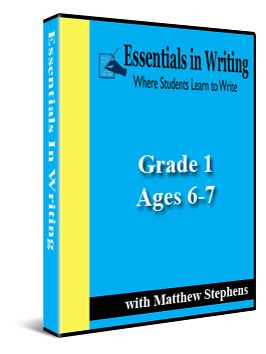






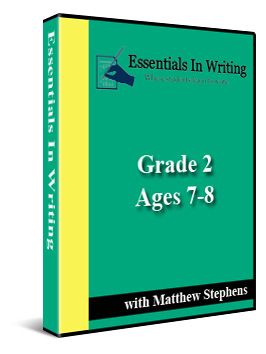



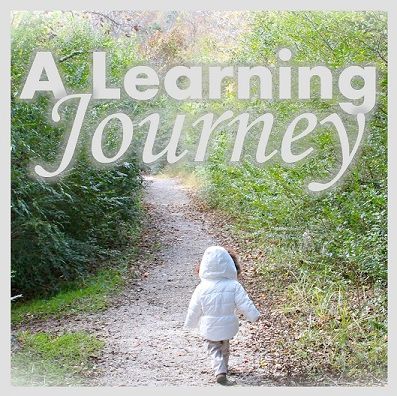






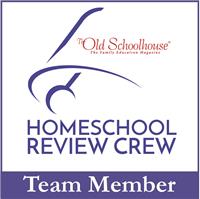
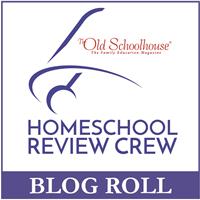





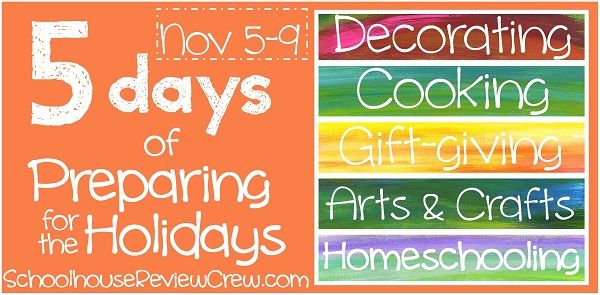
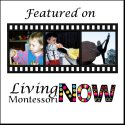


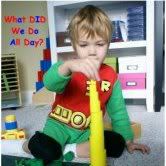



Thank you for the great review. I'm considering this program as a supplement for my two daughters. I'm curious how many DVDs were shipped for each grade. Thank you!! Kind regards, Jim
ReplyDeleteJIm,
ReplyDeleteYour welcome. You will receive one DVD with all the lessons for first grade. It would be a great supplement. How old are your daughters? Do you homeschool or are you looking for a summer supplement?
We are using the 6th grade curriculum, and it comes with 2 DVD's. We enjoy them and the customer service is phenomenal. I order a lot of ebook curriculum and my computer crashed. They were the only company that didn't give me at least a little hassle replacing the .pdf's. I always recommend them.
ReplyDelete